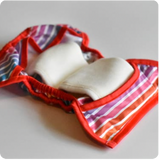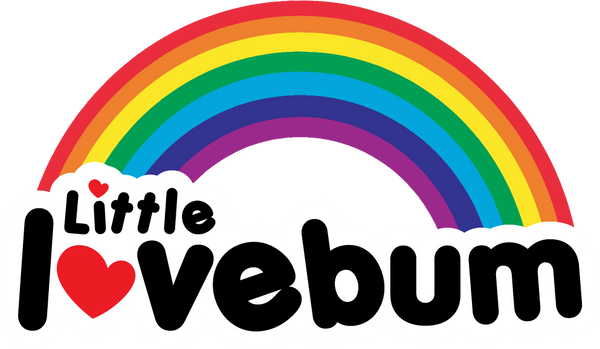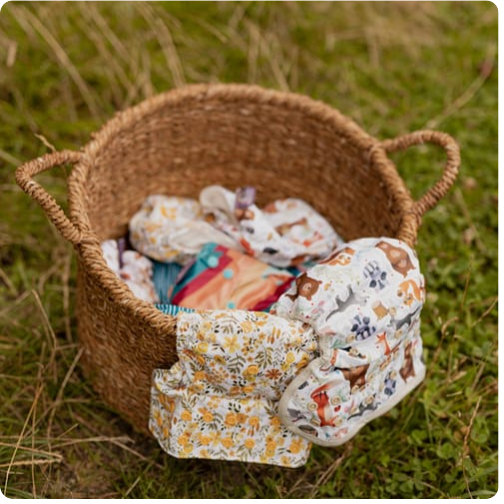Choosing cloth nappies can be overwhelming, but don't worry - we've got you covered. Our guide will walk you through everything from washing to fitting and using them while you're on-the-go. Join the cloth nappy revolution today!
How to Switch to Cloth Nappies
Making the switch to cloth nappies may seem daunting, but it's easier than you think. We'll show you how to make the switch with confidence and ease.
Start Small: Begin with just a few cloth nappies to get started. Have a look at our Reusable Cloth Nappy Incentive Scheme or our New to Cloth Bundles.
Get Advice: Join a cloth nappy group or talk to other parents who have made the switch for advice and support. Cloth Nappy Libraries are a great help too as they can offer demos.
Take it Slow : Ease into it by trying cloth nappies at home first before venturing out.
The Benefits of Using Cloth Nappies
Cloth nappies are not just great for the environment, but they also come with many added benefits for your baby and your wallet.
Reduces Waste: Cloth nappies reduce landfill waste and contribute to a cleaner environment.
Budget-Friendly: Cloth nappies can save you money compared to disposable nappies over the course of your baby's nappy-wearing years.
Gentle on Baby's Skin: Cloth nappies are softer and gentler on delicate baby skin and contain no harsh chemicals.
Find Your Perfect Cloth Nappy
With so many cloth nappy options, how do you choose?
Choose the Right Style: There are many different styles of cloth nappies - choose the one that fits your baby best. Have a look at our nappy comparison chart and read about a few different styles below.
Consider Your Needs: Everyone's needs are different. Consider what features are important for you - such as absorbency, quick-drying or cost-effective.
Get in Touch with Your Local Cloth Nappy Library: Many do demos to help you choose.
Different Types of Cloth Nappies

Pocket nappies have a waterproof outer layer and a liner layer that wicks moisture away from baby's skin. They have a pocket opening where you insert an absorbent insert. They are versatile as you can adjust your absorbency.

All-in-one (AIO) nappies have a waterproof outer layer and an absorbent inner layer that is sewn in. They are the most similar to disposables in terms of ease-of-use.

An All in Two (AI2) nappy means that the absorbent insert and the waterproof cover are two separate pieces that need to be put together to create a complete cloth nappy.

Prefolds and Flats are the most traditional types of cloth nappies. They require folding and fastening with a snappi or pins. They require a cover to go over them as they are not waterproof.

Fitted Nappies are shaped to fit around baby's legs and waist, and have poppers or velcro for fastening. They require a separate waterproof cover to be fully waterproof.
Fitting Cloth Nappies
Fitting is key to ensuring the effectiveness of cloth nappies. We'll show you how to find the right fit and make sure your little one stays comfortable.
Adjusting the Nappy: One-Size nappies can be adjusted with poppers. The length and waist can be changed to suit your baby.
Putting the Nappy on: Place the nappy under your baby and bring the front of the nappy up between their legs and secure it. After putting the nappy on your baby, observe how it fits around the legs and bum making sure it is snug but not too tight.
Video Guides
Avoid Over-Compression: Too much compression can cause leaks. Don't tighten the nappies too much and avoid wearing tight-fitting clothing over the nappy.
Washing Cloth Nappies
Washing cloth nappies is easier than you think. No need to be grossed out by poo, we have top tips to make cleaning your cloth nappies as easy and stress-free as possible. Say goodbye to the weekly trip to buy nappies and hello to saving money while you're helping the planet.
Prepping Your Nappies Before first use, give your nappies a prewash.
Storing Your Nappies Store dirty nappies in a dry pail. This can be a XL Hanging Wet Bag if floor space is an issue as it can be hung up.
Washing Your Nappies Toss any solids down the loo. Prewash on a short wash and then do a long wash at 60°C. Line dry your nappies. More information can be found here.
With a little bit of practice, using cloth nappies will become second nature. It's an eco-friendly and cost-effective way to nappy your baby!

